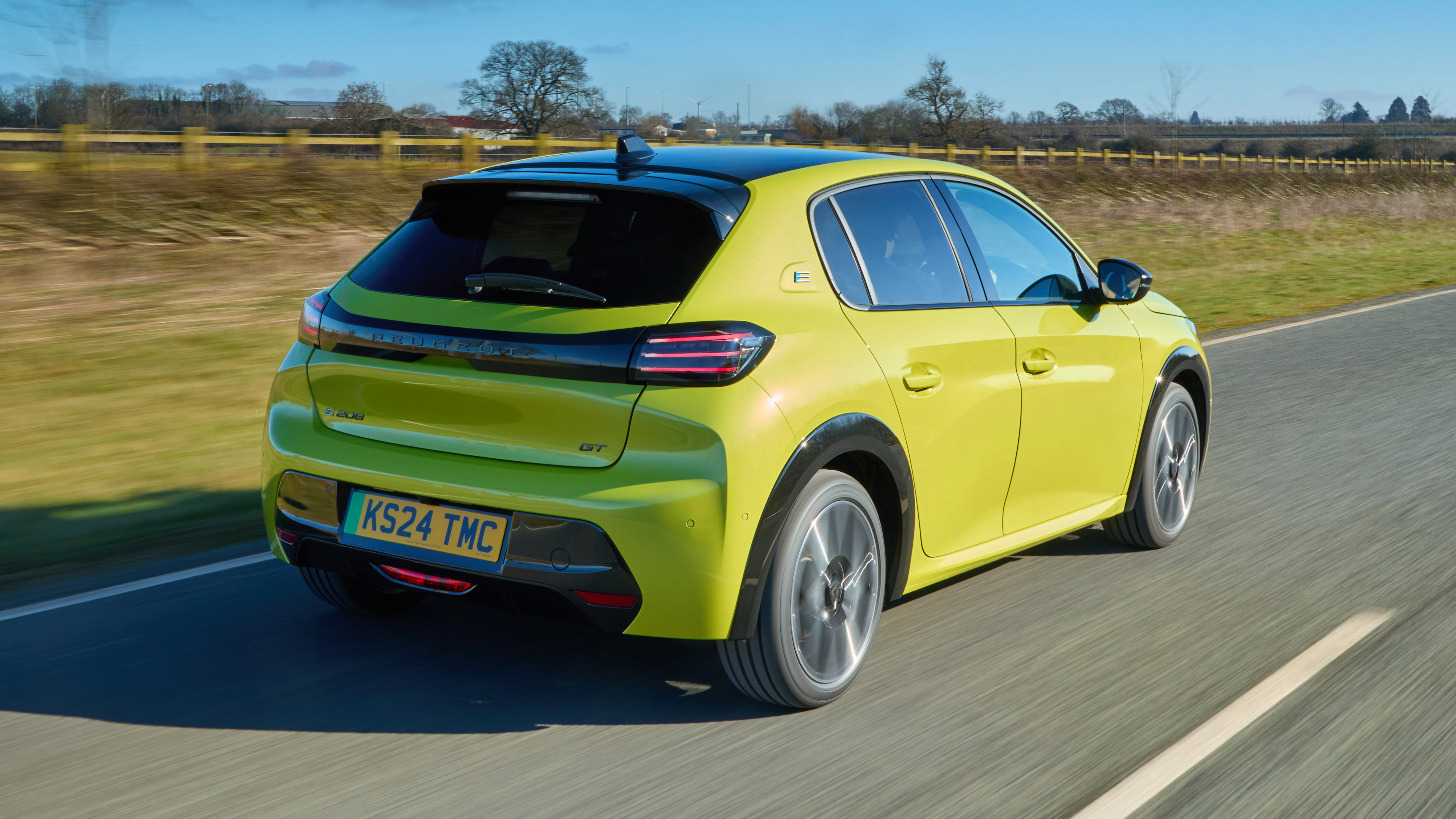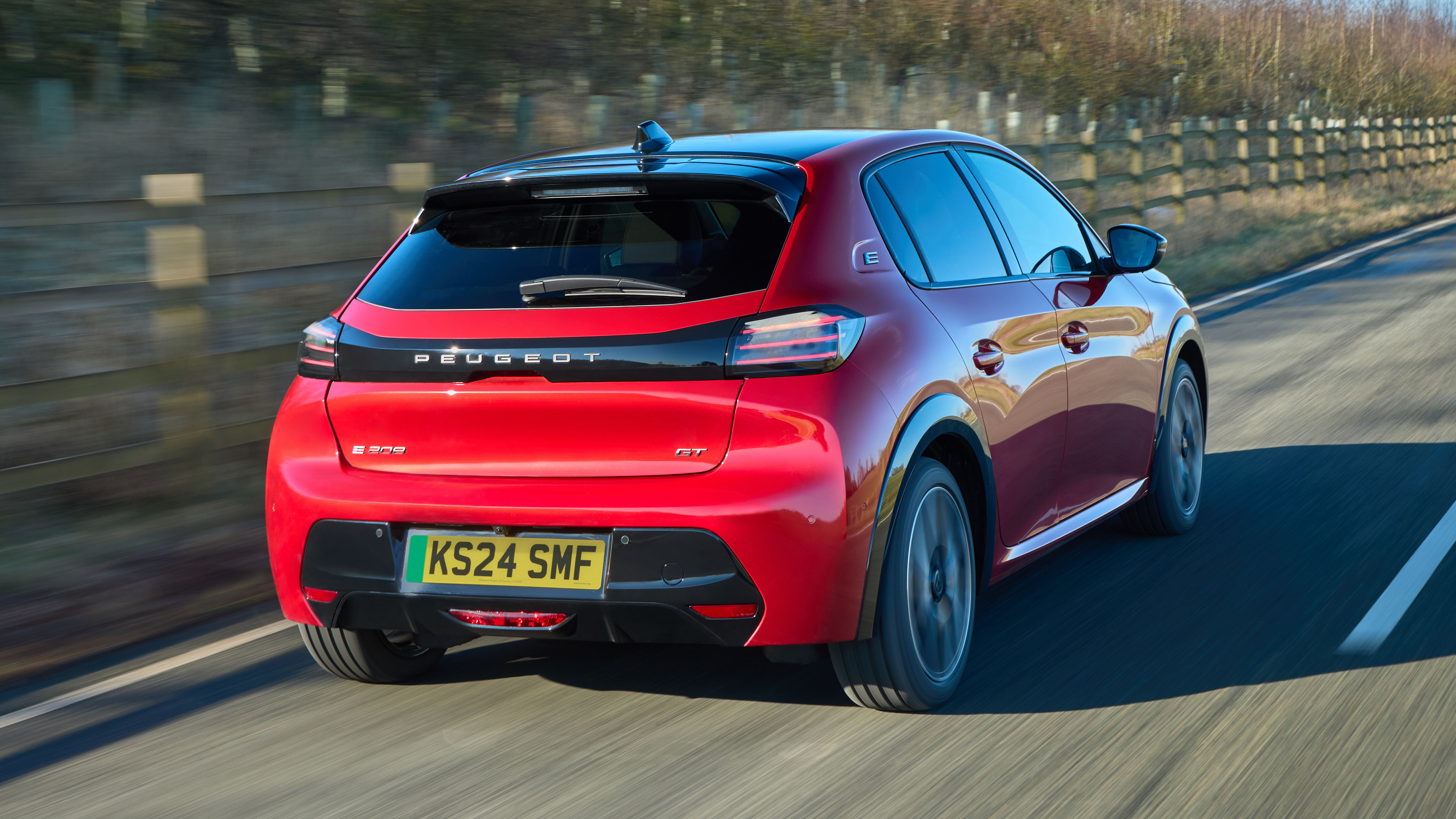
Good stuff
Strong looks, striking interior, now a longer range option
Bad stuff
A little pricey, rivals more fun to drive, cramped in the back
Overview
What is it?
This is the electric version of Peugeot’s 208 supermini. It looks very much like the combustion-engined alternative: this isn’t a car for anyone who wants to show off their zero emission, planet-saving credentials.
And it looks like a regular 208 because it really is a regular 208. Performance and space, and even running costs, are pretty similar to the 208s that you pour flammable liquid into. The battery isn't a slab under the whole floor; rather it's tucked into the spaces under the seats, and where a petrol car has its exhaust, fuel tank and other gubbins.
And being a 208 is a good thing. It's a car we like: the sharp styling makes it the first genuinely desirable Peugeot 2-0-something for a long while.
Is it as good as it looks?
Broadly, yes. A quick word on those looks – a mid-life facelift in 2023 brought around mild updates, including new front lights and quasi-grille, new wheels, and freshened tail-lamps. You’d be hard pressed to notice though.
Inside there’s now also a newly designed digital instrument panel, more powerful wireless charging and extra USB sockets, but it pleasingly still feels as sophisticated and classy as ever and it's generally very pleasant to drive too. Forget the poor trim and tin-box refinement of older French superminis. The weight of the battery makes it feel more mature than the petrol version, but of course also subtracts from the agility. See the Driving tab of this review for more.
So it’s original on the inside and nicely put together, while also being decent to drive. It’s the whole package.
Give me some e-numbers.
There are two electric set-ups. They sound similar: one is a 45kWh net battery and 136bhp motor. Post facelift, you can step up to a 48kWh pack and 156bhp motor. The batteries are labelled in the price lists confusingly by their gross capacities of 50 and 51kWh.
The range figures are 225 miles and 248 miles WLTP on the middle wheel size. In the bigger-battery one we got 4.1mpkWh driving briskly on a warm day, which amounts to 200 miles total. A heat pump is fitted as standard to reduce winter range fall-off: it cuts down on the amount of battery you use up to warm the cabin in colder weather.
The fact the car remains fairly small and light is good for overall efficiency. Mind you, at 1,558kg with driver it's still carrying 200kg of extra lard versus a comparable 208 petrol auto. Charging times on 100kW-plus chargers are around half an hour for a 10-80 per cent top-up.
And the rivals?
Unsurprisingly the closely related Vauxhall Corsa Electric is the most obvious rival, though we prefer the looks (and more notably, the interior) of the e-208. There’s also the new Mini Cooper Electric, which is better to drive and more desirable. Same could be said for the Honda E, until it met its maker. Shame.
Prices start from £31,600, which… isn’t cheap. More affordable (but less rangey) options are slowly arriving, including the Dacia Spring (circa £15k) and Citroen e-C3 (circa £23,000). Oh, and the chic Renault 5, which replaces the now retired Renault Zoe and should offer similar range as the Peugeot for around £25k.
Our choice from the range

What's the verdict?
In the old days you chose a car then decided what sort of engine and transmission to get. With the 208, in addition to petrol, with several outputs and manual or mild-hybrid auto, there's also electric.
So the e-208 can appeal both to people who primarily want a 208 then opt for that powertrain. And to people who primarily want an electric car and then opt for an e-208. And its combination of strong range, easy personality, and surprising desirability make it a strong contender, whichever way you look at it.
Of course the 208 does have some flaws – even for a supermini it’s not particularly roomy and it’s far from the best one to drive. This electric version ports over those flaws (plus a hefty price hike), but it still inherits the 208’s good qualities too.
The Rivals
Trending this week
- Car Review
Bentley Brooklands










